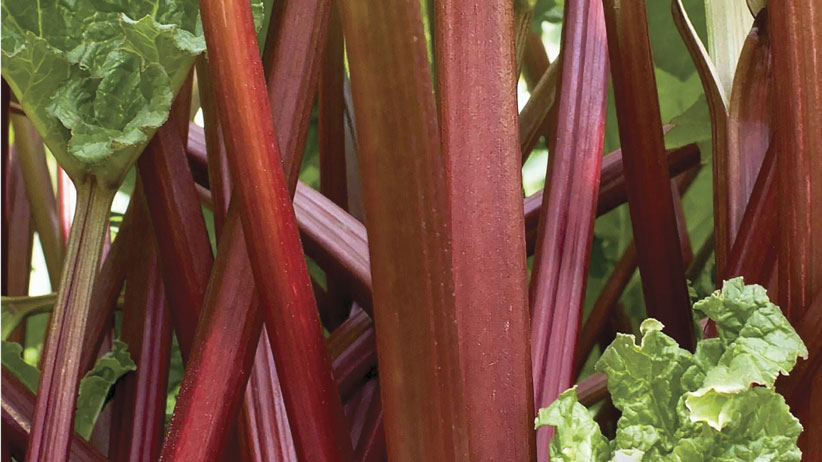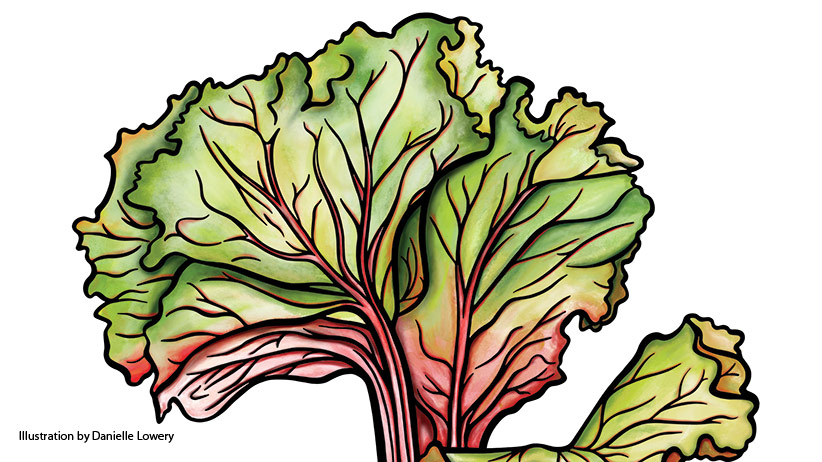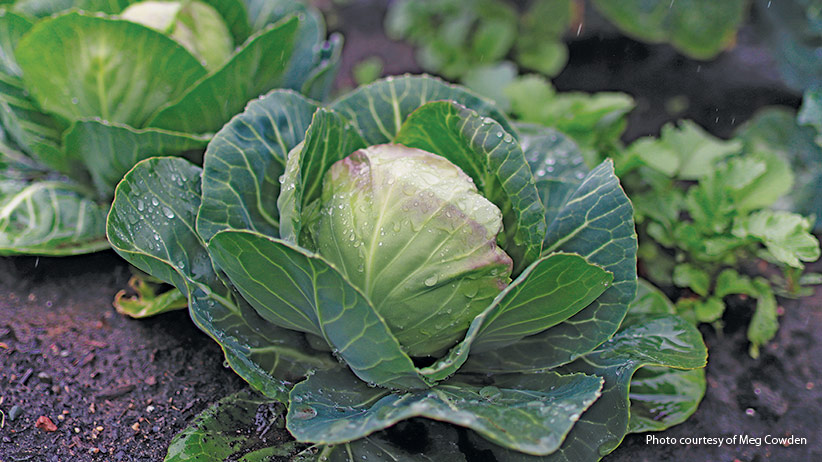Sometimes the simplest solutions take the longest to reveal themselves. Just ask Polly Gorden. It took her almost two decades to finally figure out how to turn a neglected corner of her backyard into a great-looking and productive vegetable garden. The answer? Galvanized raised garden beds.
“When we moved here in 1999,” Polly says of the garden she shares with her husband, David, in Indianapolis, “this corner contained three gangly hornbeams and a rather unsightly planting bed surrounded by a high chain-link fence.” Eventually the chain link was replaced with a handsome wooden fence, the hornbeams were removed and a raised bed installed. “Despite my best efforts, the raised bed seemed to constantly be weedy,” she explains. “And we had rabbit issues.”
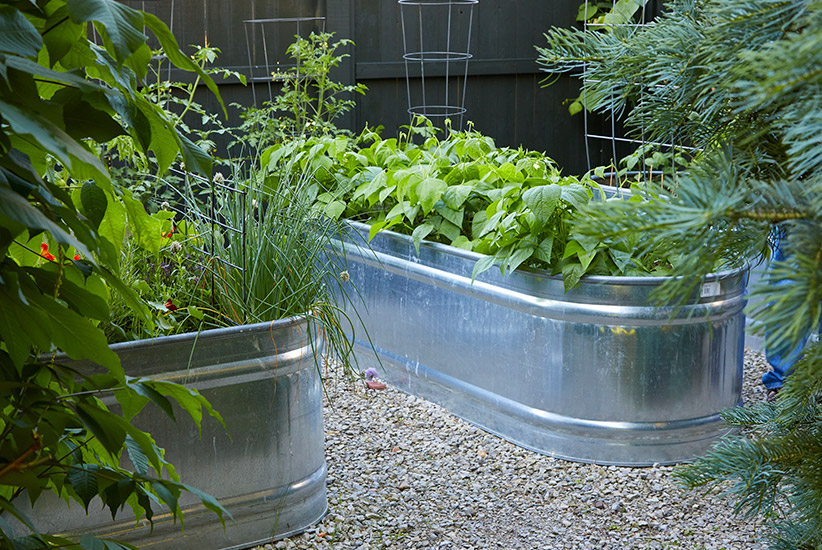
Benefits of growing vegetables in galvanized raised garden beds
Stock tanks, also known as troughs, make a great and attractive alternative to wooden raised beds. Benefits include:
- They’re easy to use (no construction required).
- Cost-wise they are a good investment because they will last for decades.
- They also will keep out burrowing animals: If rabbits are an issue, be sure to look for one that is at least 3 feet tall.
- Used stock tanks can be found at farm sales or on craigslist.org. New stock tanks can be purchased at farm stores or some garden centers.
- Troughs come in a variety of sizes, shapes and heights. The taller ones provide a great option for those with mobility issues.
Raised beds warm up quickly in the spring so you can plant them earlier than in-ground beds. But they also heat up in summer: Tomatoes, peppers and eggplant appreciate the extra soil warmth but sometimes the metal can be hot to the touch.
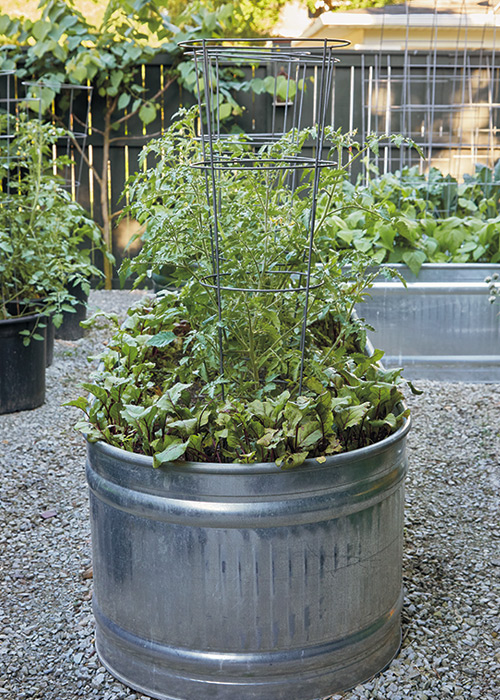
How many stock tank beds do you need?
Polly invested in three 8-foot-long tanks (for vegetables) and one 4-foot-long tank (reserved for herbs and edible flowers). Instead of installing a drip irrigation system, Polly prefers to water by hand. “I decided I actually enjoy standing out there holding the hose and checking on the garden’s status,” she says. Each spring, she mixes in a few inches of well-rotted compost to each of the troughs.
You Might Also Like
Vegetables That Produce a Lot in a Small Space
7 Easy Plants to Start from Seed
How to Build a Raised Garden Bed
Gardening Reduces Stress
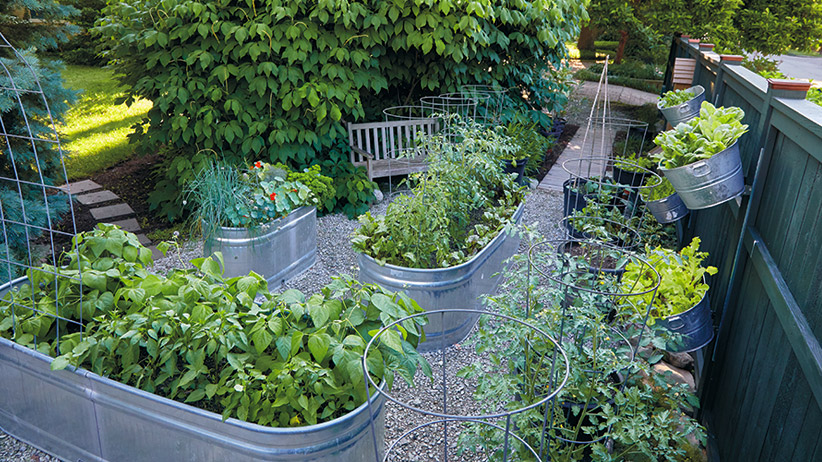
How to start a galvanized raised garden bed for vegetables
- Lay down a layer of landscape fabric.
- Top it with a few inches of crushed limestone (a row of large stones along the sides keeps the gravel where it belongs).
- Fill the bottoms of galvanized stock tanks (here there are four: three are 8 feet long, one is 4 feet long) with about 6 inches of pea gravel and covered that with landscape fabric (to keep the soil from washing away).
- Finally, fill the stock tanks with a mix of compost and top soil. Remove the plugs from the bottom of the tanks to allow water to properly drain.
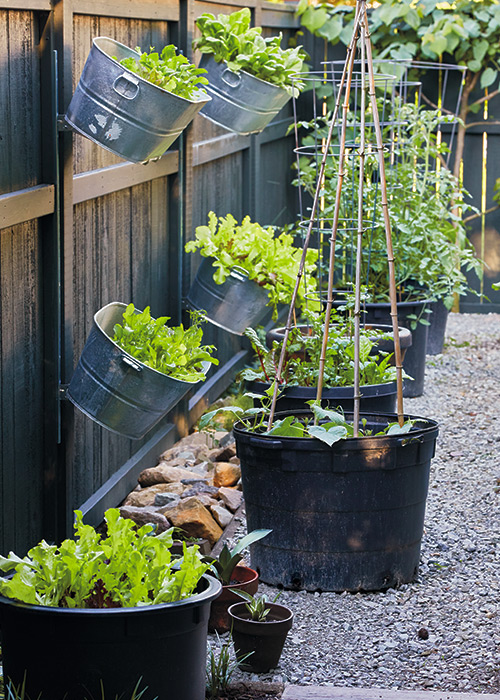
How to grow vegetables in containers
Polly also recruited smaller galvanized tubs and large growers’ pots into service as containers to take advantage of every inch of sunny space. If you want easy, large containers are better. Larger containers have more volume so plants won’t need to be watered as often. And plastic pots are slower to dry out than terra-cotta because water doesn’t evaporate through their sides. Polly uses 18-inch black plastic growers’ pots for growing ‘Sweet Million’ and ‘Sungold’ tomatoes and compact ‘Green Tiger’ zucchini. She rotates tomatoes between pots from year to year to avoid diseases.
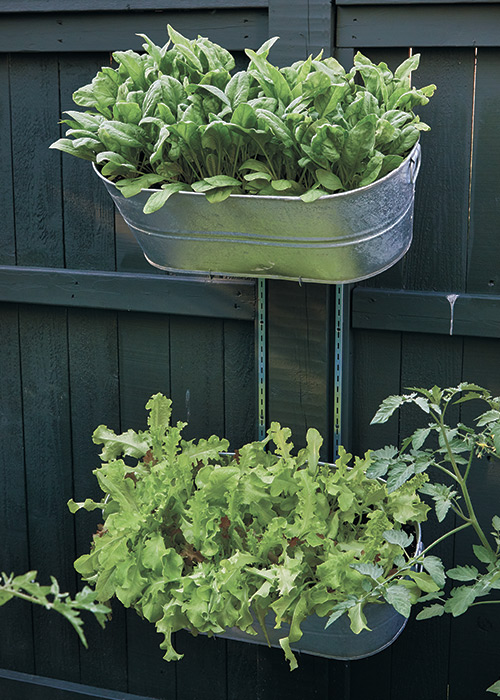
Vertical garden with galvanized tubs
Polly employs 20-gallon galvanized tubs as vertical planters attached to the black-green painted fence. Galvanized shelving strips attached to the fence hold two-slot shelf brackets. There is a pair of brackets for each tub, which is held in place with attached supports. The adjustable brackets allow the tubs to be suspended at a slant to help maximize their exposure to the sun. The tubs are planted with greens, such as lettuce, spinach, cilantro and arugula.
A healthy harvest
There are more than enough herbs and vegetables to feed Polly and her husband. “I cook a lot,” she says, “and it’s wonderful to be able to run out to the garden to get a handful of herbs or edible flowers like the nasturtiums. Whatever is in season dictates our meals.”
As she shows off the green beans in her galvanized raised garden beds, Polly says, "The fun part is harvesting." Today she harvests bushels of herbs and vegetables from this manageable 13×30-foot space. Her garden includes:
- Tomatoes
- Cucumbers
- Beans
- Beets
- Radishes
- Zucchini
- Kale
- Lettuces
- Chard
- Peppers
- Eggplant
- Dill
- Parsley
- Rosemary
- Basil
- Thyme
- Fennel
- Lavender
- Marigolds
- Nasturtiums
“I work full time as a pharmacist in an urban hospital with no windows,” Polly says. “Coming home and heading out to the backyard is incredibly therapeutic.”










